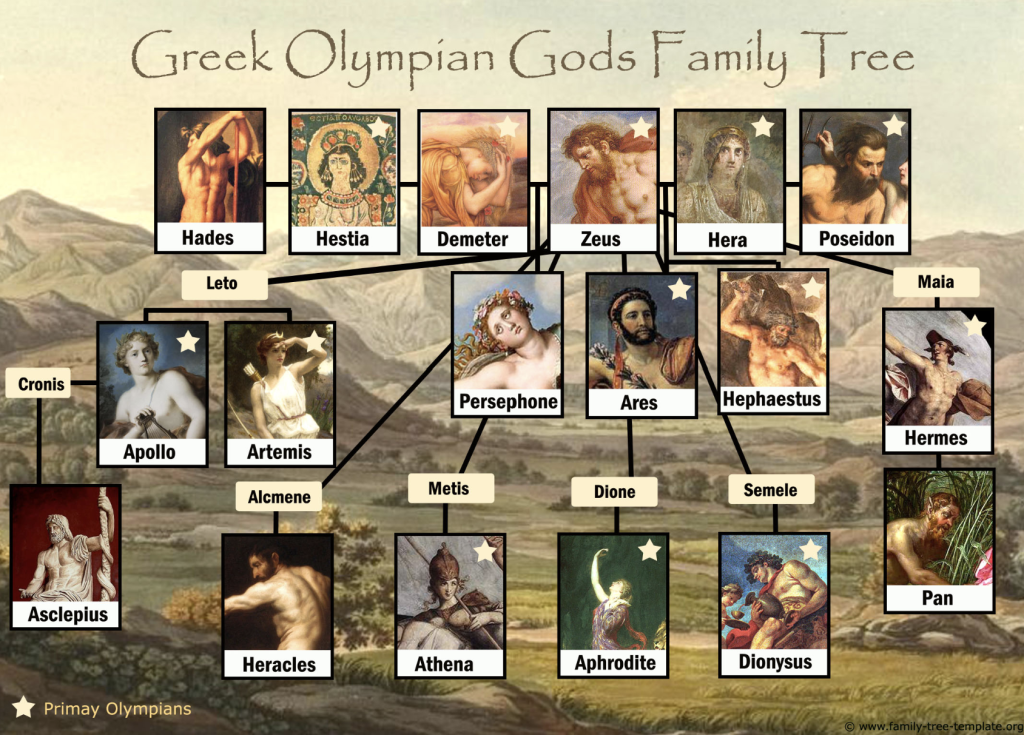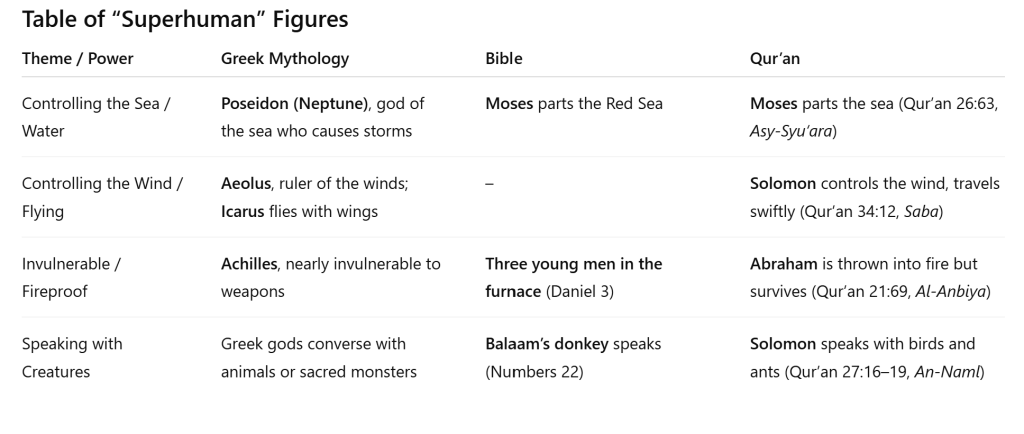
Ancient Greek mythology was already widely known from around 2000 BC until the early Common Era. Stories of Hercules with immense strength, Achilles who was nearly invulnerable, Poseidon who ruled the seas, or Icarus who could fly, were passed down through oral tradition and classical literature. Meanwhile, the Bible’s miracle stories were written centuries later, and the Qur’an appeared in the 7th century CE (610–632 CE).
This long gap raises the question: could the miracle stories of the Bible and the Qur’an be a continuation of, or influenced by, the narrative patterns of much older mythology?
The Bible’s Composition Timeline
The Bible was not written in one sitting, but compiled over more than a thousand years by many authors.
- Old Testament (Hebrew Tanakh): Written between about 1200 BC – 165 BC. The oldest parts (Pentateuch, stories of Moses) may date back to the 12th–10th century BC. The youngest (Daniel, Maccabees) were completed in the 2nd century BC.
- New Testament: Written between about 50 CE – 100 CE. Paul’s letters are the earliest (≈50–60 CE). The Gospels were written between 65–100 CE. Revelation was probably the last (≈95 CE).
Greek Mythology’s “Super-human” Themes
Greek myths featured extraordinary beings and “super-human” feats:
- Poseidon controls the sea and storms.
- Zeus hurls thunderbolts.
- Icarus flies with crafted wings.
- Hercules has superhuman strength.
- Some figures are born through divine intervention, without a human father.
As with scripture, these myths present humans or demi-humans who transcend normal limits.
Miracles in the Bible
The Bible contains many miracles:
- Moses parts the sea, turns his staff into a serpent.
- Jesus raises Lazarus from the dead, heals the sick, expels demons.
- Jesus is born without a biological father.
- Elizabeth gives birth at an advanced age.
- God sends floods, earthquakes, and other calamities.
These stories present humans who seem to break the laws of nature, resembling “super-humans.”
Miracles in the Qur’an
The Qur’an continues similar traditions:
- Moses parts the sea and his staff becomes a serpent.
- Jonah survives inside a great fish.
- Abraham survives being thrown into fire.
- Khidr knows the unseen.
- Solomon commands the wind, speaks with birds and ants, and leads the jinn.
- God sends natural disasters as divine signs.
The patterns strongly resemble the Bible’s miracle stories.
The 7th Century: A World of Myth
When the Qur’an was revealed, the world was still steeped in myth:
- Jewish-Christian stories were well-established in the Middle East.
- Greek-Roman mythology still influenced Europe.
- Arabian traditions included jinn and supernatural legends.
Thus, spectacular miracle narratives were part of the cultural “normal.”
Hellenisation: Greek Myth in the Near East
After Alexander the Great’s conquests (4th century BC), Greek language, philosophy, and mythology mixed with Persian, Egyptian, and Canaanite cultures. Cities like Alexandria and Antioch became centres of this exchange. Greek gods were equated with local gods, and myths blended with Near Eastern traditions. Jewish communities under Hellenistic and Roman rule inevitably absorbed some of these influences.

Noticeable Parallels
- Poseidon rules the sea → Moses parts the sea.
- Aeolus rules the winds → Solomon commands the wind.
- Achilles nearly invulnerable → Abraham survives fire.
- Heroes converse with animals → Solomon speaks with birds and ants.
- Heroes escape sea monsters → Jonah survives in the fish.
The consistent pattern: humans with abilities that surpass natural law.
Did Scripture Borrow Myth?
Two perspectives exist:
- Faith perspective: Miracles were real events. Any resemblance to mythology is coincidental, or simply reflects humanity’s love for wonder stories.
- Historical-critical perspective: The Qur’an and the Bible arose in a myth-saturated world. Their miracle patterns resonate with older traditions, including Greek myth.
Conclusion
Were the Bible and Qur’an influenced by Greek mythology?
- From a faith perspective: No — miracles are divine truth.
- From a historical-cultural view: Yes — the patterns of miracle stories show clear similarities with older mythological traditions.
In short, while not direct copies, the miracle stories of sacred texts are part of humanity’s long storytelling tradition about extraordinary, “super-human” figures who transcend natural limits.
If you find value in my work and would like to help keep this project alive and growing, I warmly welcome sponsors and donations. Your support will directly contribute to covering hosting costs and ensuring more thought-provoking articles like this can be published in the future.
Like Wikipedia, this project is free
but I welcome sponsors to help cover web hosting cost ….
and buy a Ferrari someday .
